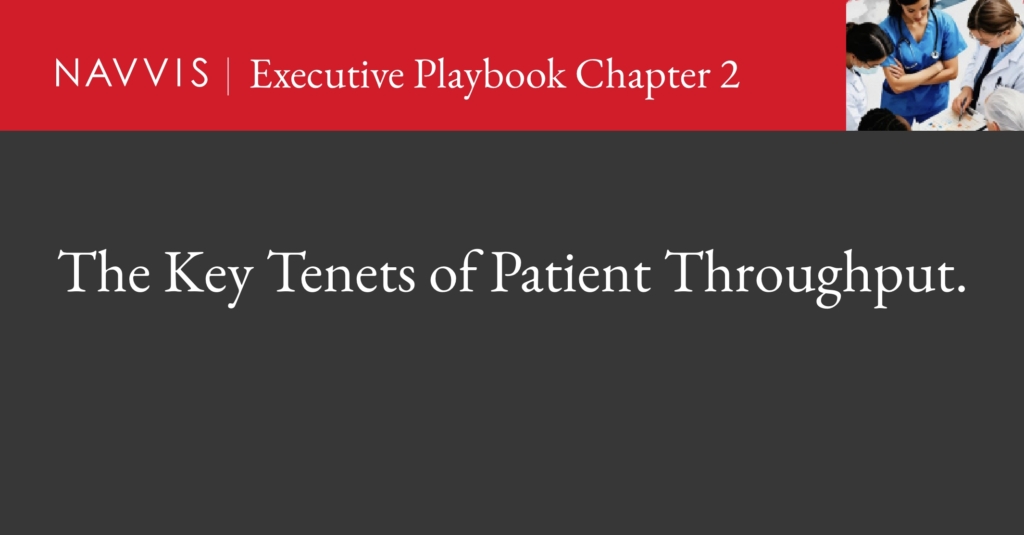
Audio transcription is below.
Welcome to Chapter 2 in the Navvis Executive Playbook, where we delve into the core principles of patient throughput, a crucial strategy that enhances efficiency and improves outcomes in healthcare. We will explore the four key tenets of patient throughput–delivering the right care, in the right place, at the right time, with the right resources. By optimizing these aspects, healthcare organizations can ensure that patients receive timely, appropriate care that’s tailored to their needs, ultimately improving clinical outcomes, patient satisfaction, and financial performance.
The Right Care.
Hospitals can achieve savings up to tens of millions of dollars by reducing penalties and freeing resources. Reducing length of stay and avoidable days, not only frees up hospital beds for other patients but also lowers the overall cost of care per patient. Some studies have shown that even a modest reduction in average length of stay can lead to up to tens of millions of dollars in annual cost savings for an average hospital.

Learn more about our About Our
Patient Throughput and Capacity Solutions
The Right Place.
Facilitate smooth transitions between different care settings, such as from the emergency department to inpatient units or from hospitals to post-acute care facilities. Smooth transitions ensure patients receive care in the setting or department most appropriate for their conditions, stages, and health statuses. Implement robust discharge-planning processes beginning on day one, to ensure proactive discussions with the care team, patients, and families, to facilitate smooth, timely transfers to the most appropriate next site of care.
At the Right Time.
Reduce delays in care delivery by optimizing processes like the first surgery starts on time in the operating room and minimizing turnaround times. Reducing delays helps prevent unnecessary prolonged hospital stays and decreases waiting times for critical interventions. Ensure smooth transitions between different care settings. For example, from hospital to home, home health, or skilled nursing facility by coordinating care and maintaining effective communication across care teams.
The Right Resources.
Make sure that the right healthcare professionals are providing appropriate levels of care. For example, the effective use of observation units to monitor patients who do not require full admission, thus conserving inpatient beds for those in greater need. Involve a range of healthcare providers, including primary care physicians, specialists, nurses, care managers, and social workers across the care continuum. The involvement of a multidisciplinary team helps manage resources efficiently and serves to provide comprehensive care.
If your system is ready to elevate its performance and unlock the financial and clinical benefits of a comprehensive patient throughput strategy, Navvis is here to guide the way. As a leader in population health and value-based care, we partner with some of the nation’s most forward-thinking health systems to create integrated, efficient care pathways. By optimizing patient flow, improving transitions, and aligning resources with patient needs, we help organizations achieve better health outcomes, reduce costs, and enhance patient satisfaction.
Contact us today to learn how we can support your organization in achieving better patient outcomes and financial success.
Ready to get started with a patient throughput strategy?



